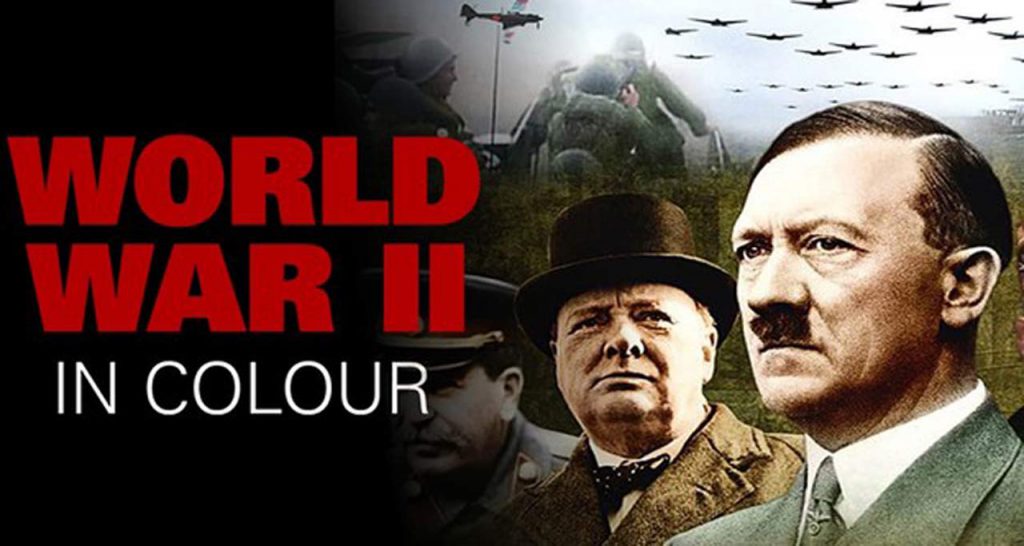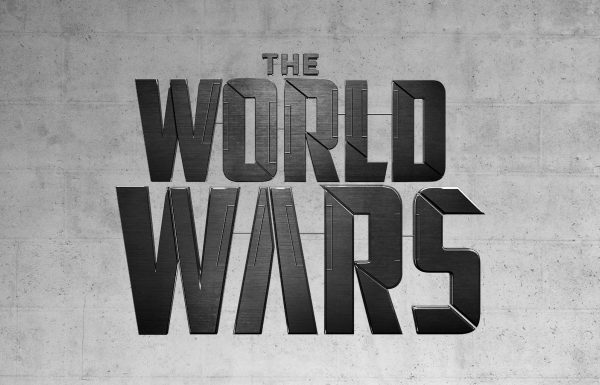World War II In HD Colour episode 5: December 7th 1941 is “a date that will live in infamy” proclaimed President Franklin Roosevelt. That was the day that Japan entered World War II, with its surprise attack upon the US Fleet in Pearl Harbour. Japan swiftly followed this up with the defeat of a huge British army in Singapore. For a while Japan was rampant in the Pacific. But gradually, America, the sleeping giant, awoke. The war that would follow would be characterised by major innovations. In particular, it saw the battleship consigned to history and the emergence of the aircraft carrier as the decisive weapons of the seas.
World War II in Colour is a 13-episode British television docuseries recounting the major events of World War II narrated by Robert Powell. It was first broadcast in 2008–2009. The series is in full colour, combining both original and colourized footage. The show covers the Western Front, Eastern Front, North African Campaign and the Pacific War. It was on syndication in the United States on the Military Channel.
World War II In HD Colour episode 5
Attack on Pearl Harbor
The attack on Pearl Harbor on December 7th, 1941 was a surprise military strike by the Imperial Japanese Navy Air Service against the United States naval base located in Pearl Harbor, Honolulu, Hawaii. The United States was neutral at the time, but the attack led to its formal entry into World War II the following day. The Japanese military leadership referred to the attack as the Hawaii Operation and Operation AI, and as Operation Z during its planning.
The attack on Pearl Harbor was part of a larger plan by Japan to prevent the United States Pacific Fleet from interfering with its planned military actions in Southeast Asia against the overseas territories of the United Kingdom, the Netherlands, and the United States. The attack on Pearl Harbor was carried out simultaneously with coordinated Japanese attacks on US-held Philippines, Guam, and Wake Island, as well as on British Empire in Malaya, Singapore, and Hong Kong.
The attack on Pearl Harbor began at 7:48 a.m. Hawaiian Time and was carried out by 353 Imperial Japanese aircraft, launched from six aircraft carriers. The base was attacked in two waves. The damage inflicted on the United States was severe; of the eight US Navy battleships present, all were damaged, with four sunk. All but the USS Arizona were later raised, and six were returned to service and went on to fight in the war. The Japanese also sank or damaged three cruisers, three destroyers, an anti-aircraft training ship, and one minelayer. More than 180 US aircraft were destroyed, and 2,403 Americans were killed, and 1,178 others were wounded. The Japanese losses were minimal; 29 aircraft and five midget submarines were lost, and 64 servicemen were killed. Kazuo Sakamaki, the commanding officer of one of the submarines, was captured.
The Japanese attack had several major aims. First, it intended to destroy important American fleet units, thereby preventing the Pacific Fleet from interfering with the Japanese conquest of the Dutch East Indies and Malaya and enabling Japan to conquer Southeast Asia without interference. Second, it was hoped to buy time for Japan to consolidate its position and increase its naval strength before shipbuilding authorized by the 1940 Vinson-Walsh Act erased any chance of victory. Third, to deliver a blow to America’s ability to mobilize its forces in the Pacific, battleships were chosen as the main targets, since they were the prestige ships of any navy at the time. Finally, it was hoped that the attack would undermine American morale such that the US government would drop its demands contrary to Japanese interests and would seek a compromise peace with Japan.
Fall of Singapore
The defeat of the British army in Singapore during World War II was a significant event in the history of the war. The British were caught off guard by the speed and efficiency of the Japanese military, which quickly overpowered the British defenses in Singapore, leading to the surrender of the British garrison on February 15th, 1942. The fall of Singapore marked the largest surrender of British-led military personnel in history and was a major blow to the British Empire’s prestige and morale.
The British had been building up their defenses in Singapore for decades, and it was considered to be an impregnable fortress, a “Gibraltar of the East”, that could withstand any attack. However, the Japanese military, under the command of General Tomoyuki Yamashita, successfully employed a strategy of outflanking the British defenses by attacking through the jungle-covered Malay Peninsula, catching the British off guard.
The British army in Singapore was vastly outnumbered and outgunned by the Japanese, who had superior equipment and training. The British were also hampered by poor communication and coordination among the various units, as well as a lack of air support. The British forces quickly became overwhelmed, and after only a week of fighting, they were forced to surrender.
The defeat of the British army in Singapore had a profound impact on the war in the Pacific. The fall of Singapore marked the first major victory for the Japanese in their campaign to expand their empire in Southeast Asia. It also marked the beginning of a series of Japanese victories in the region, which led to the occupation of much of Southeast Asia and the Philippines. The defeat at Singapore also had a significant impact on the British Empire, as it exposed the vulnerability of the British defenses in the Far East, and it had a devastating effect on British morale.




